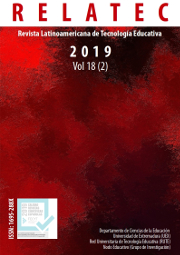Application of the «Alexander Technique» in violin and viola classrooms. Analysis of its impact through audiovisual materials
DOI:
https://doi.org/10.17398/1695-288X.18.2.85Keywords:
Music Education, Teaching Methods, Microteaching, Alexander Technique, Musical InstrumentsAbstract
The teaching and learning process of a musical instrument is intrinsically related to the development of procedural skills, where the acquisition of control in the execution of the actions occupies a highly significant place. From this point we turn our gaze towards the Alexander Technique (AT), where the mind-body is assumed to function in an integrated way. In the present study we examine the impact of its implementation in violin and viola classrooms, in relation to the modeling of specific behaviors to the performance and musical interpretation through a recording technology. To do this, we use the qualitative methodological paradigm, which conforms both to the objectives of our research as well as to the theoretical-practical foundation of AT, characterized by a holistic vision. The study starts from a specific course in this subject for elementary and professional teachers of violin and viola. After its completion, different teachers videotaped their pedagogical practices implementing the TA, which we analyzed through our proposed analytical model of classroom praxis. Using the Atlas.ti software for the treatment of the data from the audiovisual records, the results revealed that the professors subject to research incorporate various aspects of the AT in their pedagogical-didactic classroom action. The conclusions point to a set of potentialities that the application of AT presents in relation to the instrumental teaching-learning process.
Downloads
References
Alexander, F. M. (2008). La Constante Universal de la Vida. Barcelona: La Liebre de Marzo.
Alexander, F. M. (2011). Control Consciente y Constructivo del Individuo. Buenos Aires: Pequeña hoja.
Alexander, F. M. (2017). La Herencia Suprema del Hombre: La Dirección y el Control Conscientes en relación a la evolución humana en la civilización. Madrid: Letras de Autor.
Ávila, J. (2013). Relación entre la actitud postural y el desempeño frente al piano a partir de la Técnica Alexander. Música Cultura y Pensamiento, 5(5), 155-175.
Banks, M. (2010). Los datos visuales en investigación cualitativa. Madrid: Morata.
Ben-Or, N. (1995). The Alexander Technique. En C. Grindea (Ed.), Tensions in the Performance of Music (pp.84-95). London: Kahn & Averill.
Bosch, A., Hinch, J. (1999). The application of the Alexander Technique to flute teaching: two case studies. British Journal of Music Education, 16(03), 245-251.
Chou, Y. (2013). When the Mouse Meets the Elephant: A Manual for String Bass Players with Application of the Philosophy and Principles of the F. M. Alexander Technique (Tesis doctoral). Louisiana State University, Estados Unidos.
De Alcantara, P. (2011). Integrated practice: coordination, rhythm & sound. New York: Oxford University Press.
De Alcantara, P. (2013). Indirect procedures: a musician´s guide to the Alexander technique. New York: Oxford University Press.
Decreto 158/2007, de 21 de septiembre, del Consell, por el que se establece el currículo de las enseñanzas profesionales de música y se regula el acceso a estas enseñanzas. DOCV Num. 5606 de 25 de septiembre de 2007. Recuperado de: http://ir.uv.es/fLR6bgR
Decreto 159/2007, de 21 de septiembre, del Consell, por el que se establece el currículo de las enseñanzas elementales de música y se regula el acceso a estas enseñanzas. DOCV Num. 5606 de 25 de septiembre de 2007. Recuperado de: http://ir.uv.es/7TDIpfz
Galamian, I. (1998). Interpretación y enseñanza del violín. Madrid: Pirámide.
García, R. (2011). Optimiza tu actividad musical. La Técnica Alexander en la Música. Rivera: Valencia.
García, R. (2013). Técnica Alexander para músicos. La “zona de confort”: salud y equilibrio en la música. Robinbook: Barcelona.
Gimeno, J. (1988). El curriculum: Una reflexión sobre la práctica. Morata: Madrid
Havas, K. (1961). A New Approach to Violin Playing. London: Bosworth.
Hoppenot, D. (1991). El violín interior. Madrid: Real Musical.
Kaplan, I. (1994). The experience of pianists who have studied the Alexander Technique: Six case studies (Tesis doctoral). New York University, Estados Unidos.
Kleinman, J. y Buckoke, P. (2013). The Alexander Technique for Musicians. London: Bloomsbury.
Known, S. R. (2012). Basic Principles of the Alexander Technique Applied to Cello Pedagogy in Three Case Studies (Tesis doctoral). University of Cincinnati, Estados Unidos.
Landa, A. (2006). Acordeón y Técnica Alexander para músicos. Doce notas preliminares, 18, 70-75.
Latorre, A. (1989). Psicología del proceso de enseñanza/aprendizaje: La situación educativa. Valencia: Nau llibres.
Ley Orgánica 2/2006, de 3 de mayo, de Educación. BOE núm. 106 de 4 de mayo de 2006. Recuperado
de: http://ir.uv.es/k7zjzHM
Ley Orgánica 8/2013, de 9 de diciembre, para la mejora de la calidad educativa. BOE núm. 295 de 10 de diciembre de 2013. Recuperado de: http://ir.uv.es/reysj0N
Menuhin, Y. (1987). Seis lecciones con Yehudi Menuhin. Madrid: Real Musical.
Pérez, G. (1994). Investigación cualitativa. Retos e interrogantes. I. Métodos. Madrid: La Muralla.
Rolland, P. (2000). Basic Principles of Violin Playing. Bloomington: Tichenor Publishing.
Taylor, S. J. y Bogdan, R. (1987). Introducción a los métodos cualitativos de investigación. Madrid: Paidós.
Downloads
Published
Issue
Section
License
Authors who publish in this journal accept the following conditions:
1. The Author retains copyright in the article. Upon acceptance of the article, the author shall grant to the Publisher the right of first publication of the article. with the dcoument registered with the Creative Commons Attribution-NonCommercial-NoDerivative 4.0 International (CC BY-NC-ND) license, which allows to third parties to use what is published whenever they mention the authorship of the work and the first publication in this journal.
2. Authors can make other independent and additional contractual agreements for the non-exclusive distribution of the article published in this journal (eg, include it in an institutional repository or publish it in a book) provided they clearly indicate that the work was published for the first time in this journal.
3. Authors are allowed and recommended to publish their work on the Internet (for example on institutional or personal pages) before and during the review and publication process, as it can lead to productive exchanges and a greater and faster diffusion of published work (see The Effect of Open Access).









